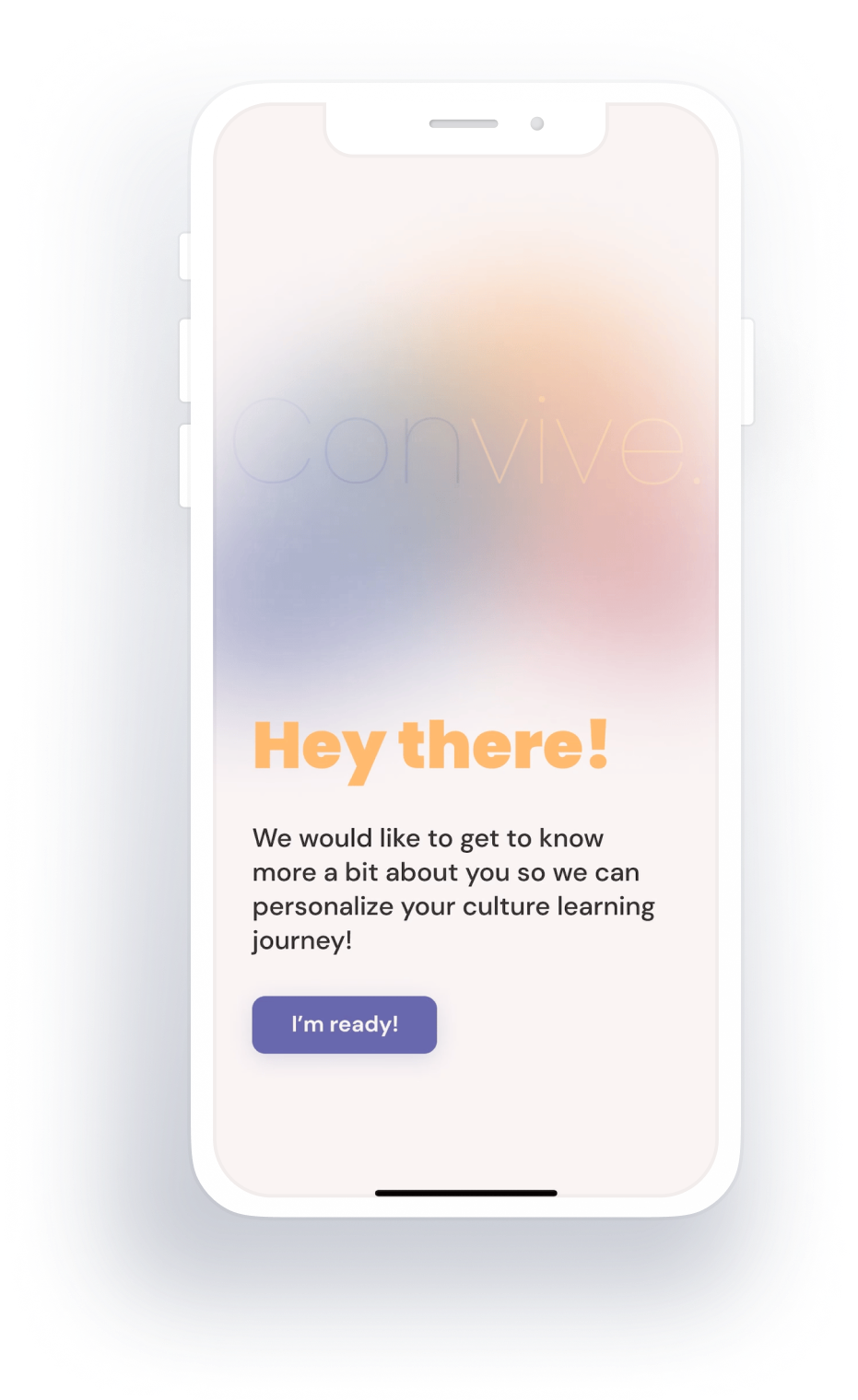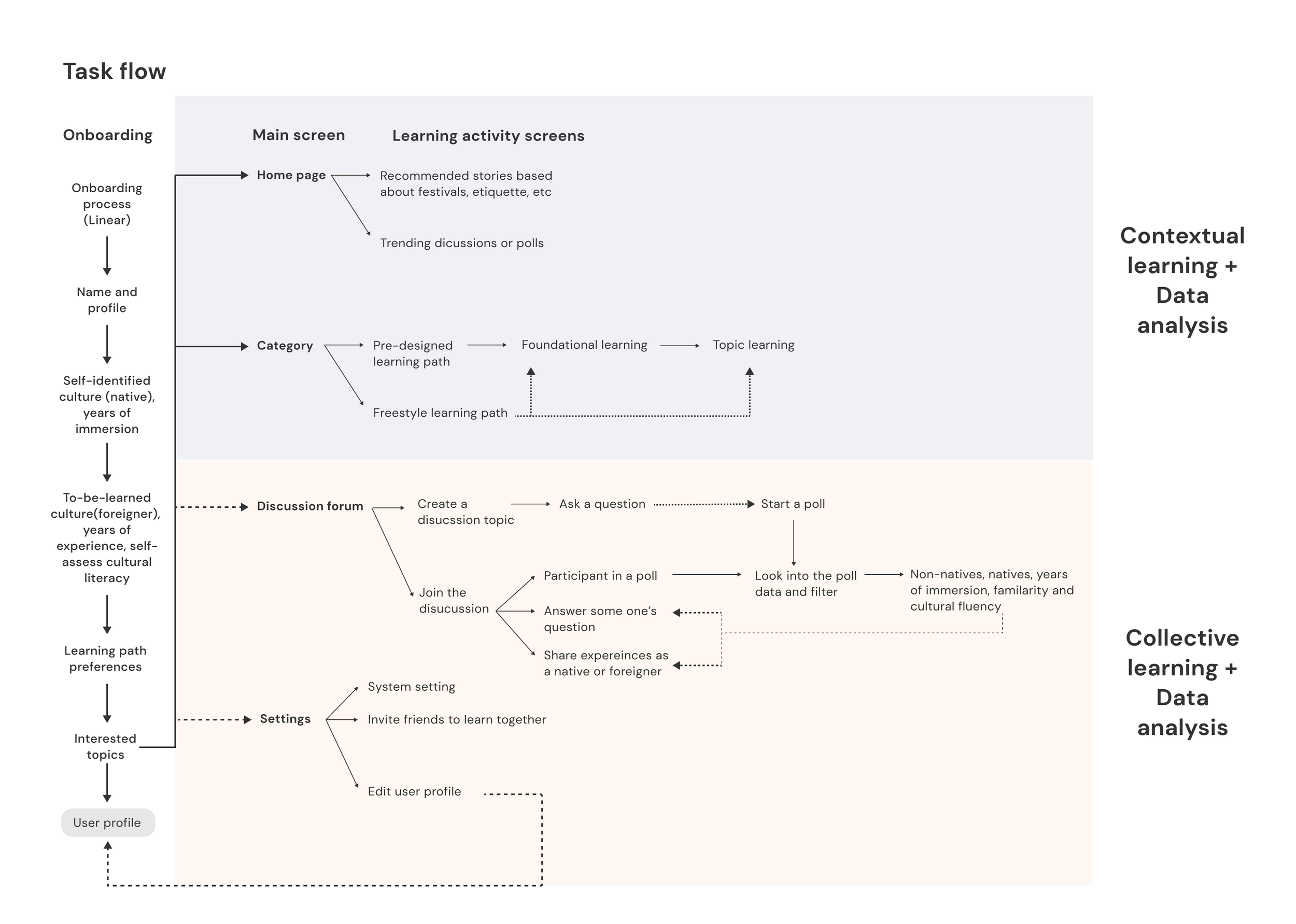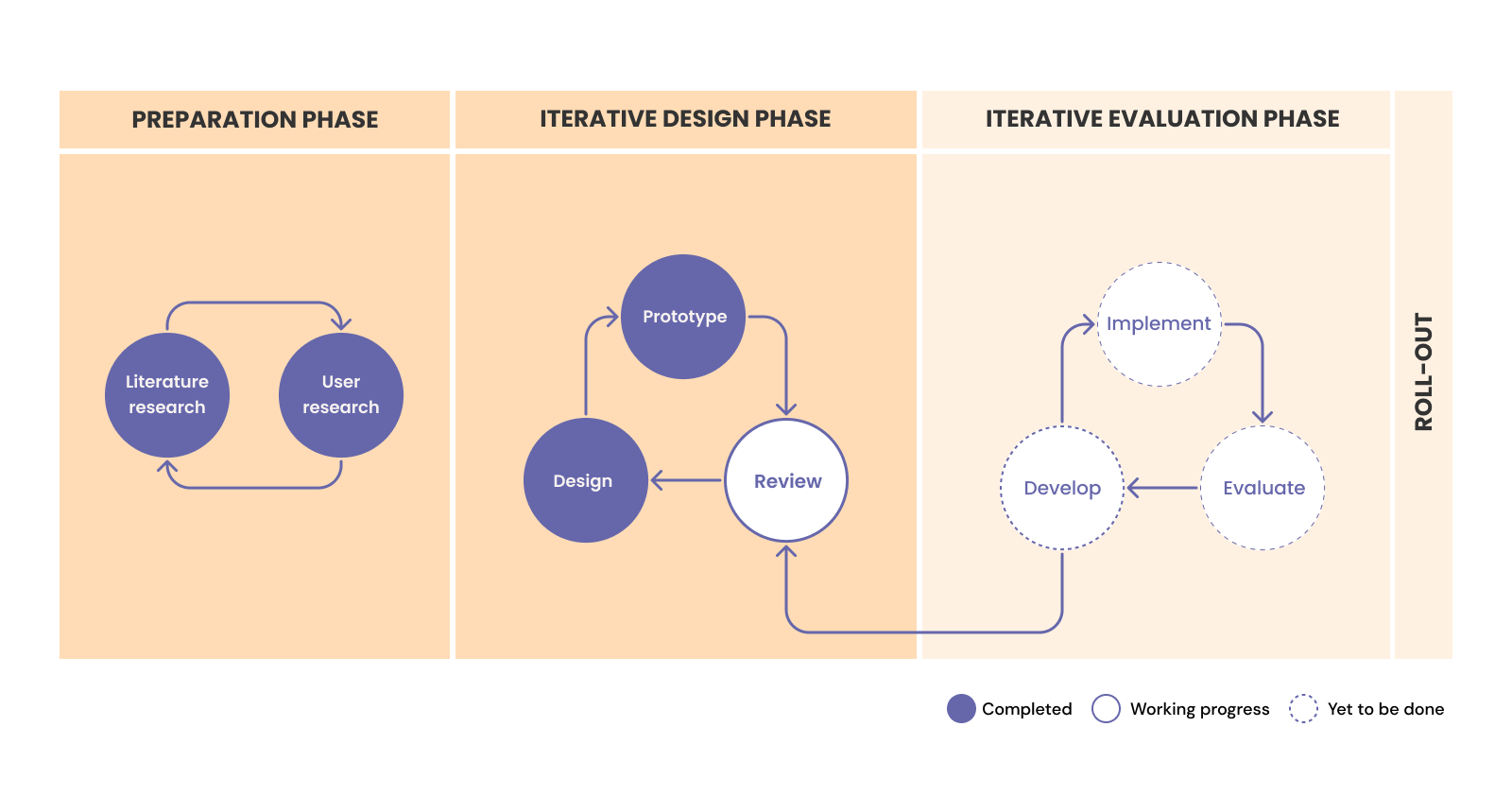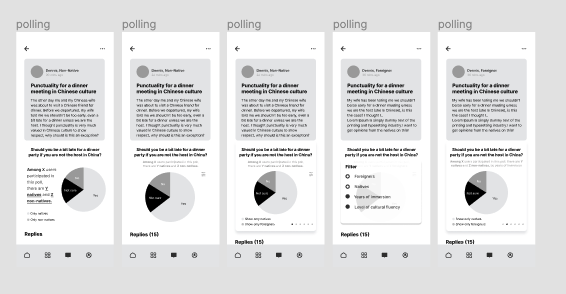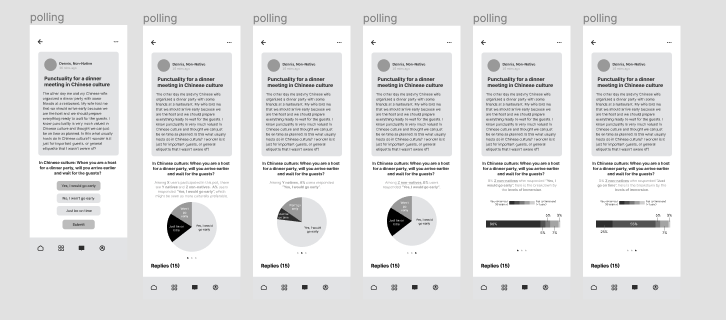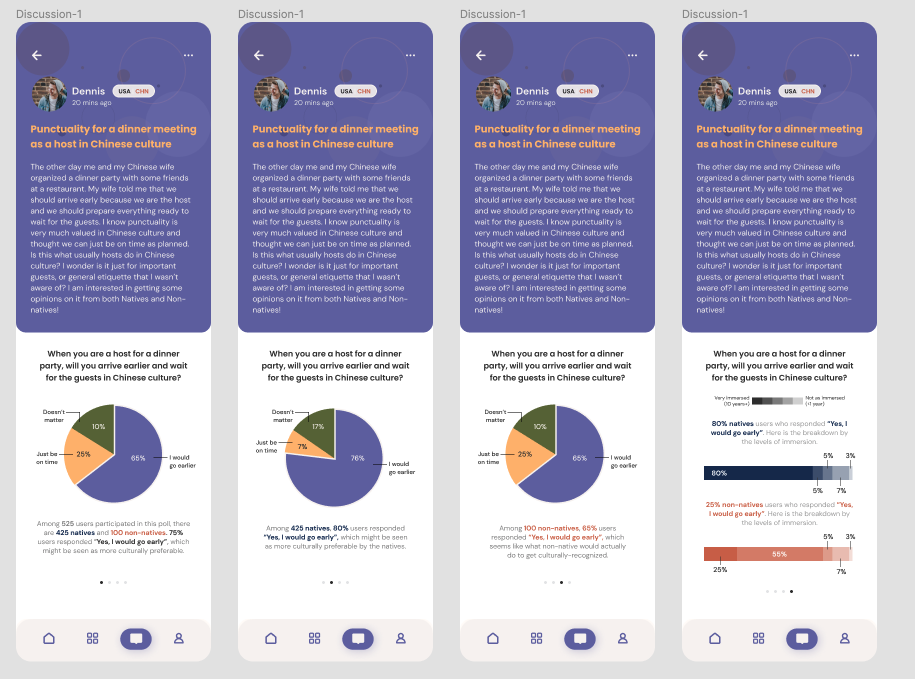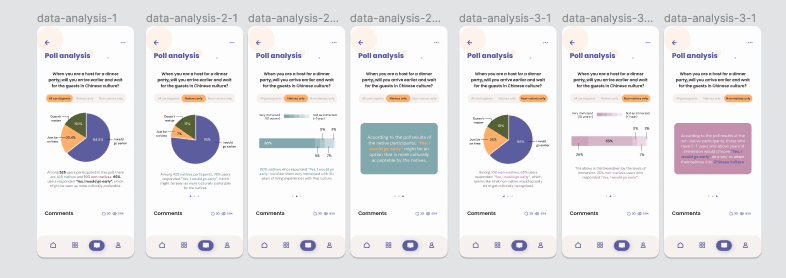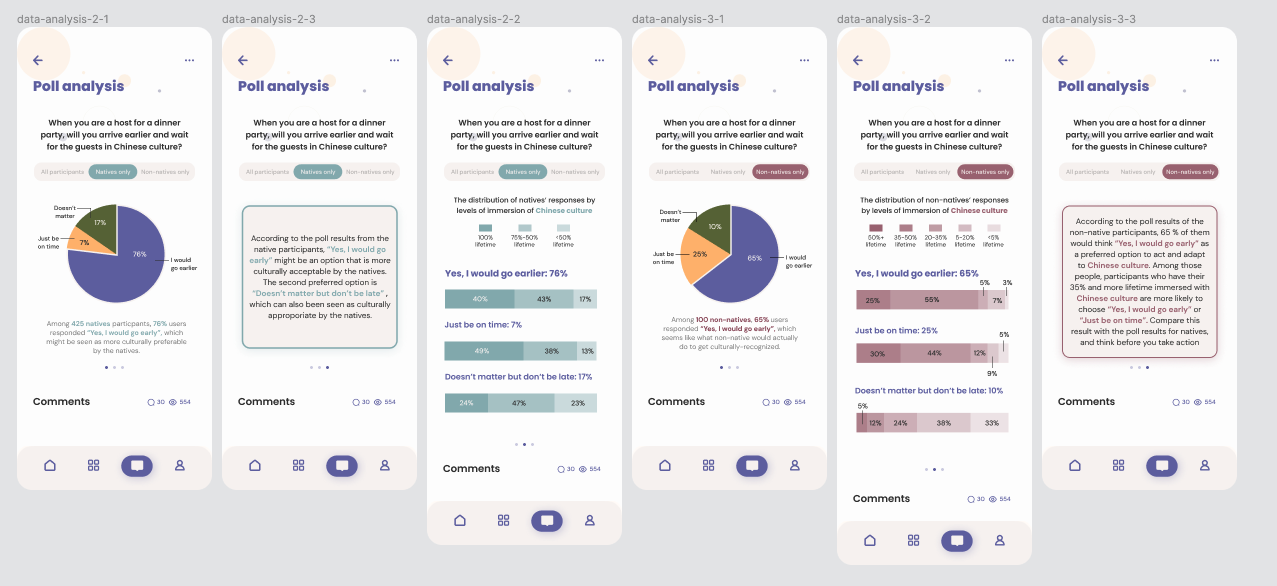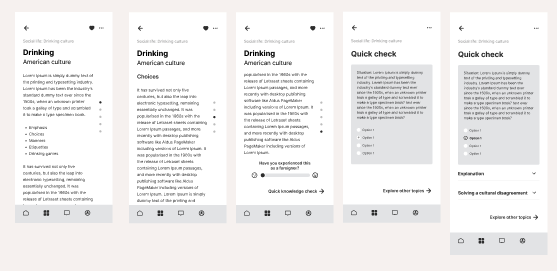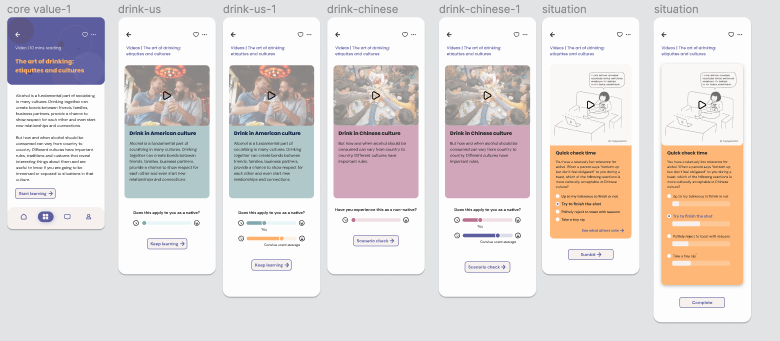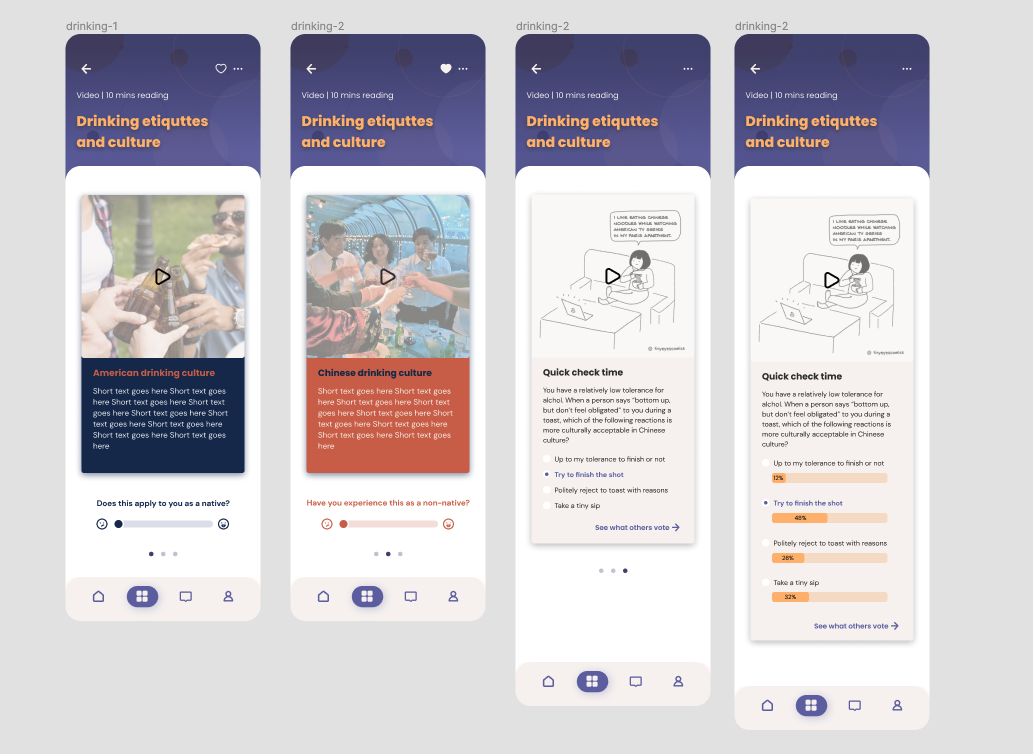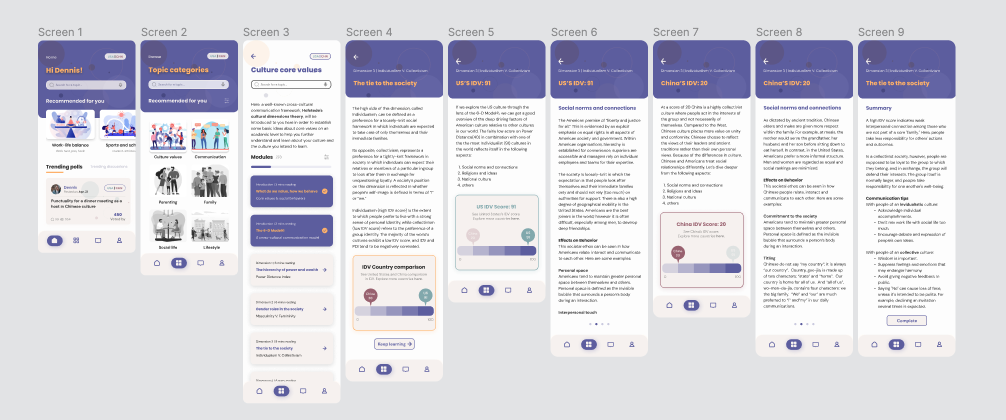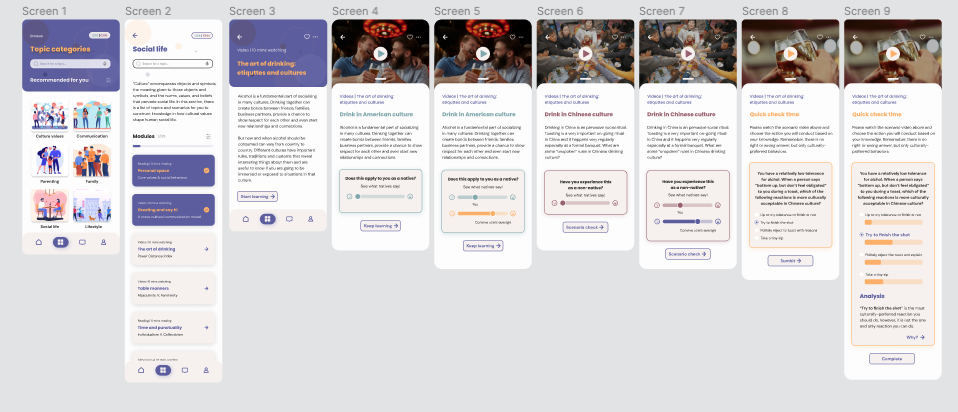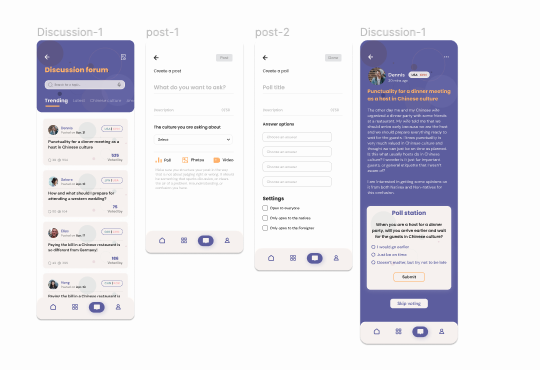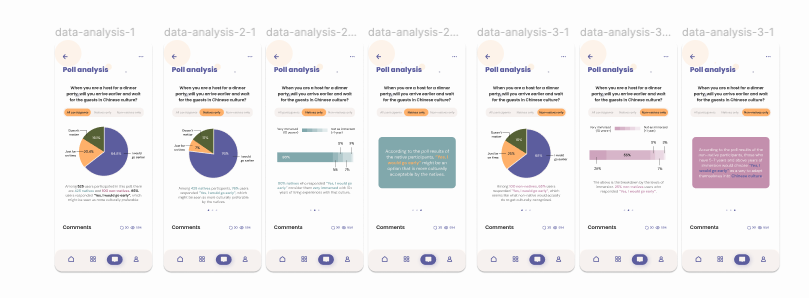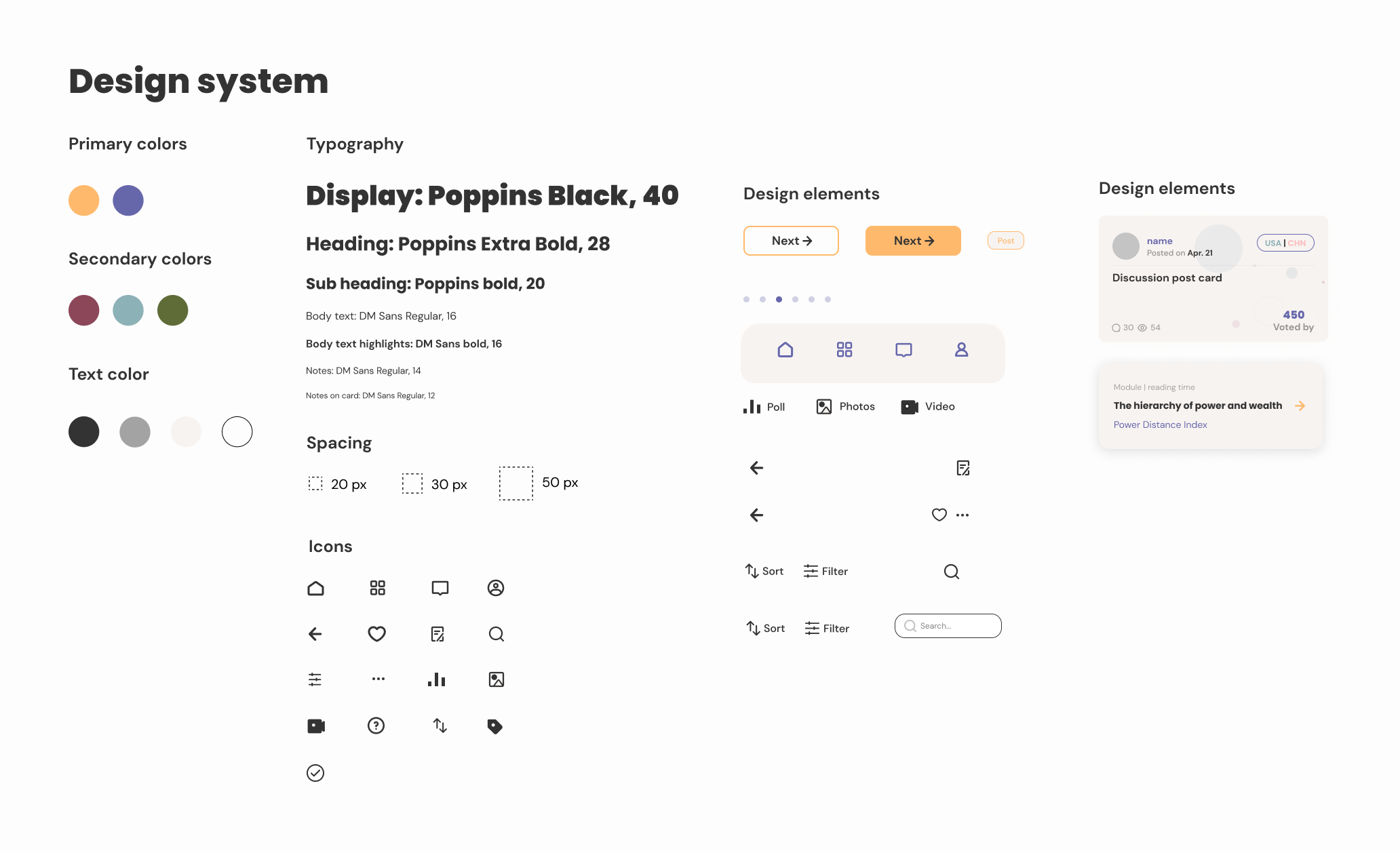
Convive
Phase 2: Design and develop
Timeline: Dec. 2021 - May 2022

Phase 2 Introduction
The thesis project is a two-semester long solo project. In the second semester, I started with concept testing and worked out towards prototyping and usability testings. On this page, I am sharing my design thinking processes and product prototypes with rationales on my solution: Convive.
Persona story
I want you to meet Dennis. Dennis is a 27-year-old American man from New York who got married with his Chinese wife Jenny recently.
At a dinner party with Jenny's relatives, Jenny's uncle poured a full shot of Chinese white wine for Dennis and proposed a toast. Dennis did one sip for politeness because he has low tolerance, however, he soon noticed that her uncle seemed a bit upset about his reaction. Dennis felt awkward but also confused, so he asked Jenny after getting back home. Jenny told him that in Chinese culture, usually it is the etiquette to always finish the drink in one shot, especially for someone of an older generation. However, for Dennis, who grew up in American culture, he still doesn’t understand why this is the case and that he has to finish the shot.
How might we support younger adults of cross-cultural families to better understand and relate to their partner's culture so that they can conduct more effective, inclusive and respectful cultural conversations at the early stage of their family life?
My design solution to solve the problem is Convive. Convive is a mobile cultural learning application that teaches cultural values and practices contextually by connecting culture theories and life experiences.
User flow
The learning activities and contents on Convive are designed based on Contextual Learning Theory, Adult Learning Theory, Social Constructivism, and Active Learning. User-generated data is a critical part of Convive’s approaches to provide multiple lenses to minimize stereotypes and biases. The following flowchart shows a typical user flow on Convive:
Design iterations
The working progress of Convive from brainstorming to development uses SAM (Successive Approximation Model) as its primary design model, with rapid iterations in each phase.
Due to time constraints, the evaluation phase is under future implementation
Iteration processes for some key features
Feature 1: The “poll station”
Wireframe-1
Wireframe-2
Wireframe-3
Prototype-1
Prototype-2
Prototype-3
Feature 2: contextual learning
Wireframe-1
Wireframe-2
Wireframe-3
Prototype-1
Prototype-2
Prototype-3
Design solutions
Contextual learning
Inheriting the idea of Contextual Learning Theory that learners best construct knowledge when information and knowledge are presented in a way based on their existing knowledge or experiences, Convive scaffolds users’ native culture into the to-be-learned culture learning process to promote active learning and knowledge transfer. This learning path starts with learning about core values first (foundational learning), then to topic-based contextual learning materials (topic learning), and ultimately to the applications and internalizations in real-life situations.
Foundation learning section
An essential part of foundational learning is the core value module. Convive’s pre-designed learning pathway starts by exposing the learners to core values of cultures on a theoretical level, with specific examples to the cultures that the learned selected during the onboarding process. This module is supported by Hofstede's cultural dimensions theory (also known as the “6-D Model”), which is a cross-cultural communication model that was developed at the end of the 1970s by psychologist Geert Hofstede.
Contextual learning: foundation learning section
Topic learning section
Topic learning makes the second half of the contextual learning process. Interviewees responded with the need of knowing certain aspects of cultural values, etiquette, traditions and so on. In order to accommodate the need, Convive provides cultural learning content by topics and categories generated from daily life situations.
Contextual learning: topic learning section
Collective learning: Discussion forum
Convive aims to build a safe and supportive learning environment that learners feel comfortable sharing experiences, ask questions and get feedback or suggestion from a group of peers who are in similar situations. The discussion forum is an important feature that Convive implemented to achieve this goal, while at the same time, promoting collective learning among users of similar or complementary interests, experiences and backgrounds.
Discussion forum: Creating a post and a poll
The discussion forum on Convive serves as a Community of Practice for users to construct knowledge together based on each other’s knowledge and personal experiences. Users have the opportunities to ask the community questions by creating a post; additionally, users can create a poll along with the post to collect more information and insights from the community.
Discussion forum: creating a post or starting a poll
User voting: the poll system
Convive implemented a user voting system based on the idea of “crowdsourcing”. Crowdsourcing is used to host and collective experiences, opinions and ideas that draw from a large and diverse population. Users are able to create a poll of a question in mind and ask for opinions and experiences from other users who experienced this culture. The poll results are visualized in pie charts and bar charts.
Poll station
The design system
Convive’s user interface is designed based on visual design principles, color theory, and universal design principles in order to provide a minimal, intuitive and welcoming visual learning experience for the users.
Convive used Mellow Apricot (#FFB96D) and Very Peri (#6667AB) as the primary colors. Very Peri is the best match of the Pantone color of the year 2022 “Very Peri”, which is “a warm and friendly blue hue with a carefree confidence and joyful attitude, emboldens uninhibited expression and experimentation” according to Pantone (2021). Mellow Apricot is an orange-yellow color that creates a sense of warmth, harmony and attention-grabbing. The combination of Very Peri and Mellow Apricot is not completely complementary by definition, but still passes the contrast ratio for large text and graphic components.
Another set of colors are in addition to the primary color combination: Dry Rose (#8C4759) (shown as Figure 21) and Pewter Blue (#8CB1B6) (shown as Figure 22). This combination is secondary and only be used in specifically in differentiating native cultures and to-be-learned culture and their related learning contents and components.
Logo
There is an application logo and a business logo for Convive. Two rectangle with rounded corners in Pewter Blue and Dry Rose represent users’ native culture and to-be-learned culture; and the overlapping section means that users will understand the core of the two cultures and how they are similar or different to each other by learning with Convive.
Showcase
Here is the presentation slides for my thesis project Convive, featuring in the key features of the application with research findings and theories that support the design design making. This project also won program award “ Excellence in Prototyping”.

